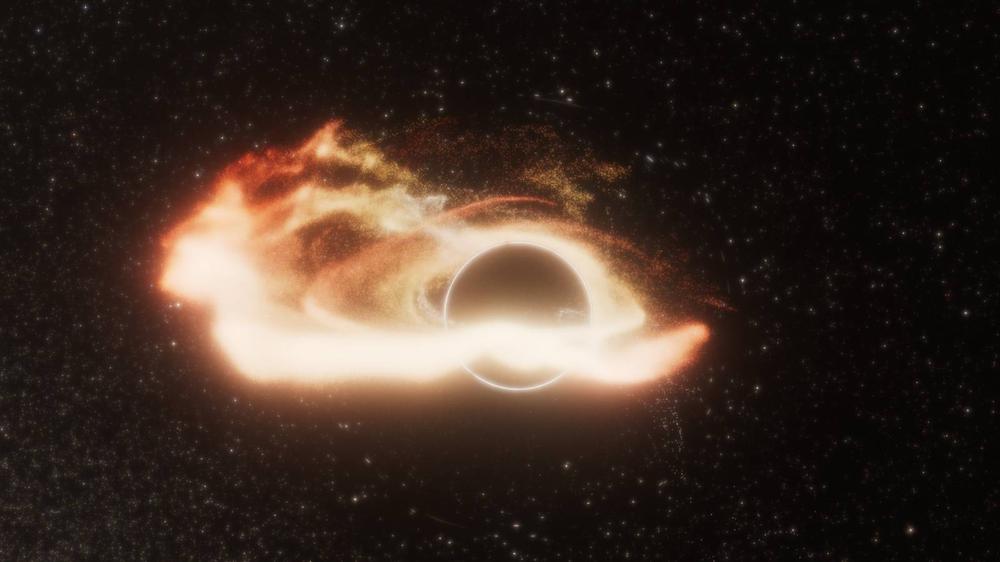Astronomers have spotted a supermassive black hole feasting on a star in one of the strangest cosmic events ever seen, and it’s happening thousands of light-years from where such a monster should exist.
The discovery, published in The Astrophysical Journal Letters, centers on a tidal disruption event called AT2024tvd, where a star was violently shredded after drifting too close to a black hole.
A tidal disruption event is basically, when a star drifts too close to a black hole and gets torn apart by its gravity. Imagine a cosmic blender: the star stretches into a long stream of gas, heats up, and glows brighter than entire galaxies for a short time. These violent flares almost always happen right in the heart of galaxies, just a few light-years from their supermassive black holes.
But this one erupted about 2,600 light-years off-center, roughly 25 times farther out than any black hole of this size should be. That distance alone makes AT2024tvd one of the strangest and most important events astronomers have ever recorded.
Black hole eating star thousands of lightyears away
Researchers at the University of California-Berkeley say the object was first flagged by the Zwicky Transient Facility, which tracks sudden flashes of light across the night sky. What seemed at first like a routine stellar death quickly turned into a cosmic mystery once follow-up radio scans revealed the black hole’s offbeat position.
“It’s truly extraordinary,” said UC Berkeley postdoctoral researcher Itai Sfaradi, who led the radio observations. “Not only is this the first time we’ve observed such bright radio emission from a tidal disruption event happening away from a galaxy’s center, but it’s also evolving faster than anything we’ve seen before.”
Scientists believe the wandering black hole could have been flung from its galaxy’s core during a past collision, or perhaps arrived from another galaxy entirely. The phenomenon could also confirm long-standing theories that galaxy mergers can eject supermassive black holes, leaving them to roam the outskirts of galaxies until another unlucky star drifts too close.
Adding to the mystery, astronomers detected two separate bursts of radio waves, one 131 days after the initial event, and another even stronger flare 63 days later. These rapid-fire outbursts may be the result of the black hole’s “backwash” slamming into surrounding gas as it devours stellar debris.
Researchers now believe there could be many more rogue black holes hidden across the universe, detectable only when they light up in such destructive fashion.

 The Best Deals Today: Bleach Rebirth of Souls, Resident Evil Requiem, and More
The Best Deals Today: Bleach Rebirth of Souls, Resident Evil Requiem, and More